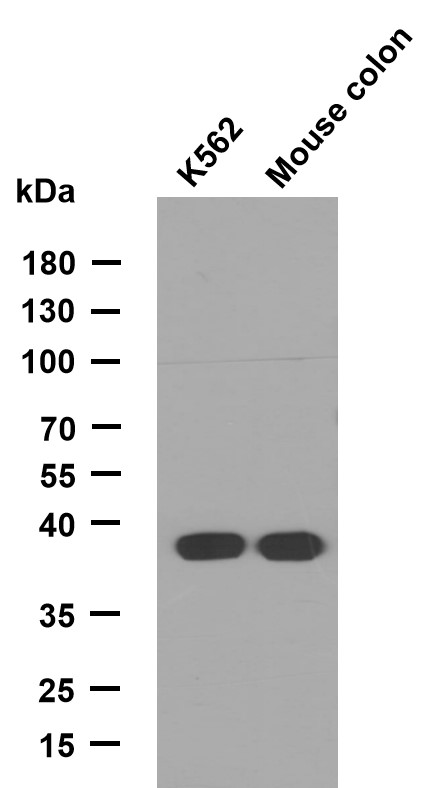Fhit Polyclonal Antibody
- Catalog No.:YT1704
- Applications:WB;IHC;IF;ELISA
- Reactivity:Human;Rat;Mouse;
- Target:
- Fhit
- Fields:
- >>Purine metabolism;>>Metabolic pathways;>>Small cell lung cancer;>>Non-small cell lung cancer
- Gene Name:
- FHIT
- Protein Name:
- Bis(5'-adenosyl)-triphosphatase
- Human Gene Id:
- 2272
- Human Swiss Prot No:
- P49789
- Mouse Swiss Prot No:
- O89106
- Immunogen:
- The antiserum was produced against synthesized peptide derived from human FHIT. AA range:81-130
- Specificity:
- Fhit Polyclonal Antibody detects endogenous levels of Fhit protein.
- Formulation:
- Liquid in PBS containing 50% glycerol, 0.5% BSA and 0.02% sodium azide.
- Source:
- Polyclonal, Rabbit,IgG
- Dilution:
- WB 1:500 - 1:2000. IHC 1:100 - 1:300. IF 1:200 - 1:1000. ELISA: 1:10000. Not yet tested in other applications.
- Purification:
- The antibody was affinity-purified from rabbit antiserum by affinity-chromatography using epitope-specific immunogen.
- Concentration:
- 1 mg/ml
- Storage Stability:
- -15°C to -25°C/1 year(Do not lower than -25°C)
- Other Name:
- FHIT;Bis(5'-adenosyl)-triphosphatase;AP3A hydrolase;AP3Aase;Diadenosine 5';5'''-P1,P3-triphosphate hydrolase;Dinucleosidetriphosphatase;Fragile histidine triad protein
- Observed Band(KD):
- 16kD
- Background:
- This gene, a member of the histidine triad gene family, encodes a diadenosine 5',5'''-P1,P3-triphosphate hydrolase involved in purine metabolism. The gene encompasses the common fragile site FRA3B on chromosome 3, where carcinogen-induced damage can lead to translocations and aberrant transcripts of this gene. In fact, aberrant transcripts from this gene have been found in about half of all esophageal, stomach, and colon carcinomas. Alternatively spliced transcript variants have been found for this gene. [provided by RefSeq, Oct 2009],
- Function:
- catalytic activity:P(1)-P(3)-bis(5'-adenosyl) triphosphate + H(2)O = ADP + AMP.,cofactor:Divalent cations. Magnesium, but manganese and to a lesser extent calcium or cobalt can be substituted; but not zinc, cadmium or nickel.,disease:A chromosomal aberration involving FHIT is observed in early onset bilateral and multifocal clear cell renal carcinoma [MIM:144700]. Translocation t(3;8) (3p14.2).,disease:Associated with digestive tract cancers. Numerous tumor types are found to have aberrant forms of FHIT protein due to deletions in a coding region of chromosome 3p14.2 including the fragile site locus FRA3B.,function:Cleaves A-5'-PPP-5'A to yield AMP and ADP. Possible tumor suppressor for specific tissues.,mass spectrometry: PubMed:15007172,similarity:Contains 1 HIT domain.,subunit:Homodimer.,tissue specificity:Low levels expressed in all tissues tested. Phospho-FHIT observed in liver and
- Subcellular Location:
- Cytoplasm . Mitochondrion . Nucleus .
- Expression:
- Low levels expressed in all tissues tested. Phospho-FHIT observed in liver and kidney, but not in brain and lung. Phospho-FHIT undetected in all tested human tumor cell lines.
- June 19-2018
- WESTERN IMMUNOBLOTTING PROTOCOL
- June 19-2018
- IMMUNOHISTOCHEMISTRY-PARAFFIN PROTOCOL
- June 19-2018
- IMMUNOFLUORESCENCE PROTOCOL
- September 08-2020
- FLOW-CYTOMEYRT-PROTOCOL
- May 20-2022
- Cell-Based ELISA│解您多样本WB检测之困扰
- July 13-2018
- CELL-BASED-ELISA-PROTOCOL-FOR-ACETYL-PROTEIN
- July 13-2018
- CELL-BASED-ELISA-PROTOCOL-FOR-PHOSPHO-PROTEIN
- July 13-2018
- Antibody-FAQs
- Products Images
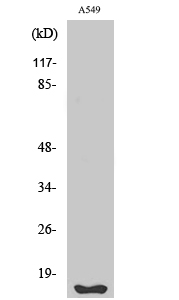
- Western Blot analysis of various cells using Fhit Polyclonal Antibody
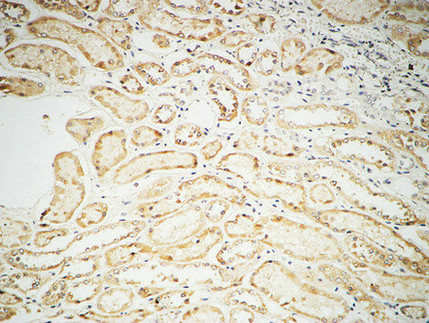
- Immunohistochemical analysis of paraffin-embedded Human kidney. 1, Antibody was diluted at 1:100(4° overnight). 2, High-pressure and temperature EDTA, pH8.0 was used for antigen retrieval. 3,Secondary antibody was diluted at 1:200(room temperature, 30min).
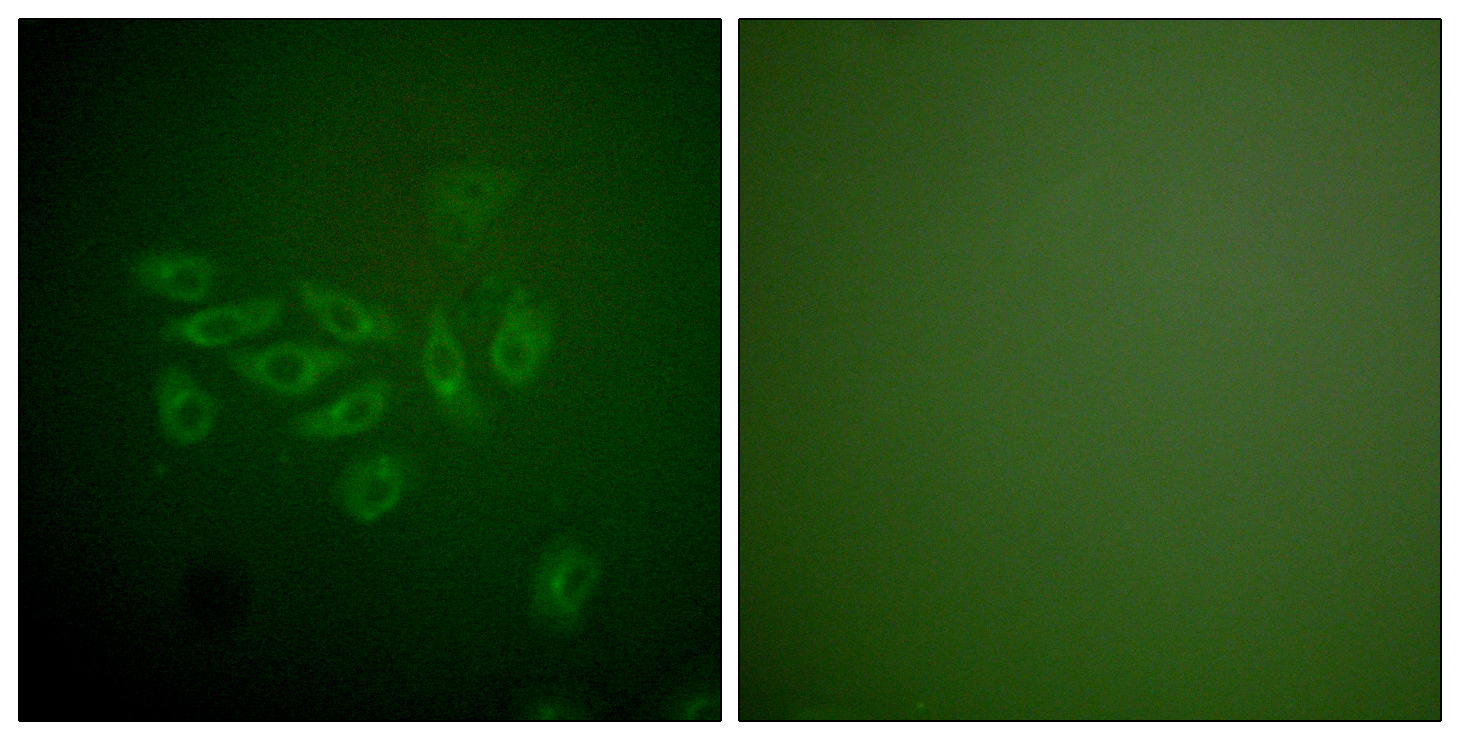
- Immunofluorescence analysis of A549 cells, using FHIT Antibody. The picture on the right is blocked with the synthesized peptide.
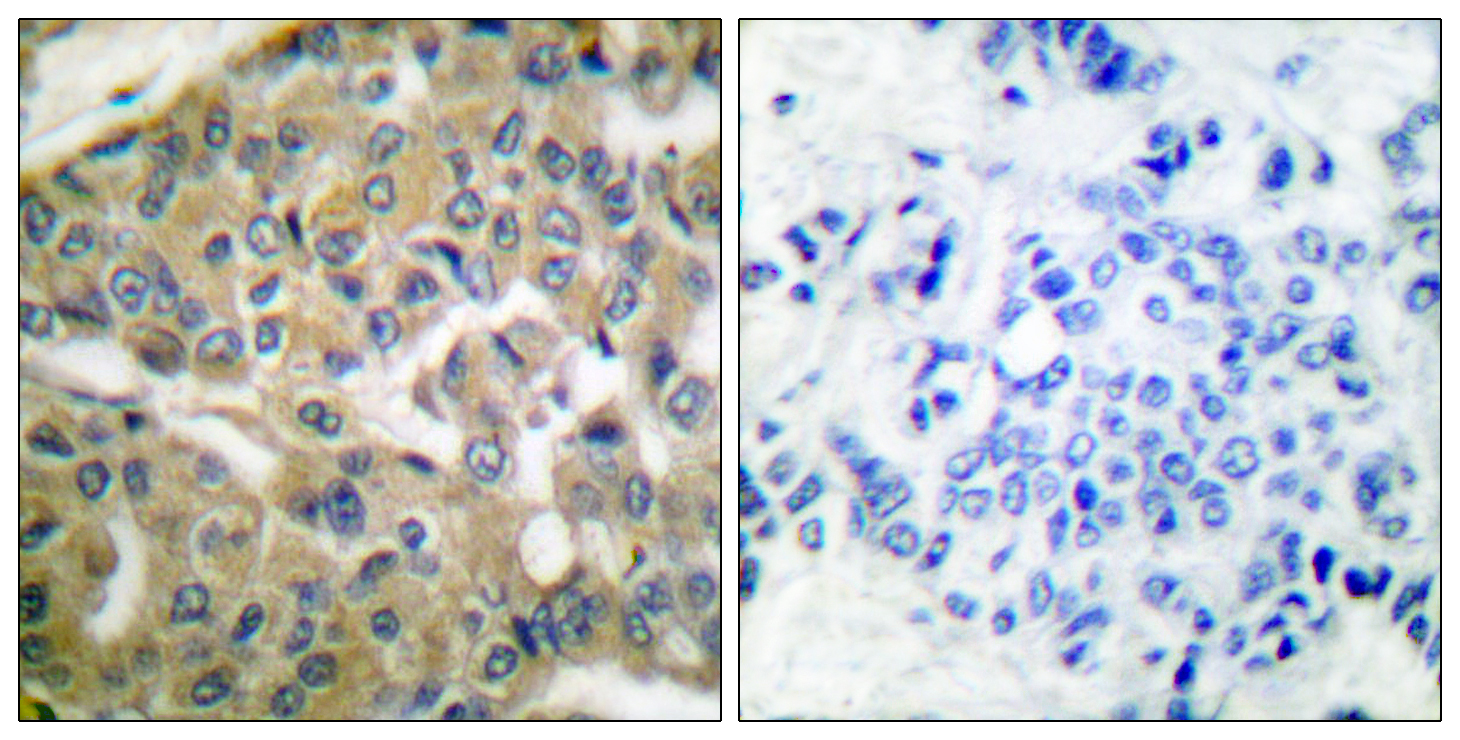
- Immunohistochemistry analysis of paraffin-embedded human breast carcinoma tissue, using FHIT Antibody. The picture on the right is blocked with the synthesized peptide.

- Western blot analysis of lysates from A549 cells, using FHIT Antibody. The lane on the right is blocked with the synthesized peptide.



